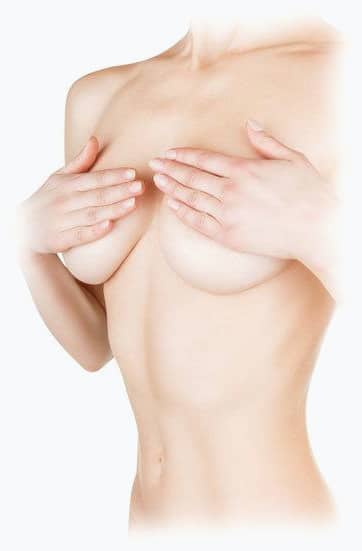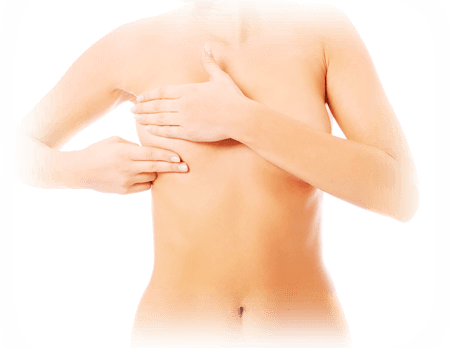All implants and implanted devices in the body create a normal immune response where a capsule of protective scar tissue (collagen fibres) forms to envelope the implant. Capsular Contracture is the abnormal contraction or tightening of this capsule around a breast implant. When this happens, the implant may become compressed, deformed, and displaced.
Most commonly this is manifested as a tightening of the breast; the breast becomes rounder and seems to sit higher up the chest. It can occur within weeks or years of surgery, in one breast or both. If the condition progresses, the shape of the breast can become significantly deformed, and pain can develop.
Capsular Contracture is defined as a thick scar around the breast implant that causes hardening of the breasts, breast pain and a visible distortion of the breast shape.
Capsular Contracture is classified according to the following subjective scale (known as the Baker Classification). Fundamentally, the tighter the capsule becomes the firmer the breast feels and the more abnormal it appears.

The exact mechanism that leads to capsular contracture is still unknown, however it is hypothesized that inflammation is the trigger that causes the contraction of the normal breast capsule. The inflammatory process then leads to contraction of smooth muscles cells.
Published rates of capsular contracture in Breast Augmentations are usually reported at about 8% at 5 years, while incidence in our patients ranges between 1 – 5%. The exact numbers vary, and some surgeons claim their rates to be 1% or less; although, there are no independently verifiable rates that low. In general, Capsular Contracture is the the most common cause of re-operation after Breast Augmentations, which most often takes places during the first year after surgery.

Capsular Contracture is one of the most researched topics in cosmetic breast surgery. Although the exact cause of this condition is not known, it is thought to result from the combination of multiple factors. Evidence suggests that contamination, bleeding, and an implant placement above the chest muscle (sub-glandular or sub-mammary) of smooth breast implants increase the risk, while using a textured implant placed under the muscle (sub-muscular or sub-pectoral) through a breast fold incision is the best way to significantly reduce the risk. There is no difference between the use of silicone and saline implants.
Leukotriene receptor antagonists (such as Singulair) prevent the action of various inflammatory mediators and have been shown in various studies to prevent or reverse capsular contracture.
At the Toronto Cosmetic Surgery Institute, we are meticulous in our approach towards minimizing your risk of developing Capsular Contracture and in achieving the perfect, worry-free breast enlargement for you. The following steps are taken during surgery:
Since Capsular Contracture is believed to result from a combination of effects, other factors should be taken into account when making decision in the planning of Breast Augmentation. Above muscle placement may, for example, have higher incidence of Capsular Contracture, but is also associated with less discomfort after surgery and less unwanted movement with chest muscle contraction.
Limiting handling and skin contact prior to insertion of a breast implant follows the indication that less handing causes lower bacterial contamination and is likely an important concept in preventing Capsular Contracture. The No-Touch Technique employed by Dr. Jugenburg is designed to avoid even the air from touching an implant during surgery. Implants are packed in a sealed, sterile plastic container. As soon as the package is opened the implant is covered with an antibiotic liquid. After the breast pocket is created, Dr. Jugenburg changes gloves and coats the new gloves and instruments with antibiotic solution. The breast pocket is then also washed with antibiotics solution. Next, Dr. Jugenburg places the implant into the breast pocket, touching it only with gloves and instruments covered with antibiotic solution. Neither air nor skin bacteria are allowed to touch the implant.
Only a relatively small percentage of women with implants develop Capsular Contracture that is severe enough to require surgical treatment. The rare patient also develops repeated Capsular Contracture, but in the majority of cases it can be successfully treated.
In the early stages of Capsular Contracture, medical (non-surgical) treatment may be effective in stopping its progression. Such methods include breast implant massage, ultrasound, pulsed electromagnetic field, and leukotriene pathway inhibitors (Accolate, Singulair). When non-surgical methods fail, surgery is used to release the tightened capsule. Under sterile conditions, the breast pocket is opened, the implant is removed, and the capsule is either cut multiple times to release the contraction (Open Capsulotomy), or cut out and removed (Open Capsulectomy) before replacing the implant. An Open Capsulotomyis normally the first line of defense and works in the majority of cases; it can be performed through the underarm and the recovery time is typically 1 – 2 days.
The following questions and answers will give you an insight into the most common concerns regarding Capsular Contracture among pre- and post-operative Breast Augmentation patients. If you have a question that is not answered here, please contact us.
Anyone can develop Capsular contracture, but it is statistically unlikely. At Toronto Cosmetic Surgery Institute, we take every possible step during surgery to further minimize your risk. These steps include: meticulous efforts to stop all bleeding at the time of surgery and the use of absolute sterile conditions.
Scarring inside your breasts cannot be predicted by past scarring from injuries or by your family history; it is truly a random occurrence. However, at the Toronto Cosmetic Surgery Institute, we take a number of steps to minimize your risk.
Post-surgical breast implant massage may help by encouraging the body to form a scar capsule slightly larger than the implant itself, and thereby having a softer feel. Vigorous massage may also help prevent the continued formation of an unacceptable Capsular Contracture.
Further information on breast implant massage is given here.
Any patient could develop Capsular Contracture at any time. However, most patients who go on to develop this condition start having symptoms within the first 6 months after their Breast Augmentation surgery.
After healing from Breast Augmentation surgery, your breasts should feel soft and natural. Over time, your breasts may become slightly firmer, but still remain soft. If there is severe hardening, then Capsular Contracture may be happening. Outward signs of Capsular Contracture are one or both breasts changing from a soft breast in a good position, to one that is becoming firmer (or harder), more rounded, and tending to ride higher up the chest. If these symptoms are allowed to progress, it can eventually become painful. You should be evaluated as soon as possible. We encourage all our patients to contact us and to arrange to see Dr. Jugenburg if they feel that their implants may be becoming abnormally firm.
The most effective treatment for Capsular Contracture is to try to prevent it from happening in the first place. At Toronto Cosmetic Surgery Institute, this is done by carefully minimizing risk factors during Breast Augmentation surgery and by all patients performing breast implant massage exercises after their surgery.
Patients rarely develop Capsular Contracture that is serious enough to require surgery. In the early stages, non-surgical treatments, such as breast implant massage, ultrasound, pulsed electromagnetic field, and leukotriene pathway inhibitors (Accolate, Singulair) can be used. If firm, high riding breasts occur, however, a lot of extra scar tissue has formed and surgical intervention is required to either cut and release the contraction (Capsulotomy), or cut out and remove the capsule (Capsulectomy).
Capsular Contracture alone does not cause implant rupture; the contraction force is exerted evenly around the surface of the implant.